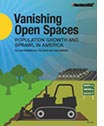Resources

Our forests, rivers and creeks, and coastal waters are invaluable to fish and wildlife, and to our own quality of life. But recent predictions indicate that our state’s human population may double to 36 million in the next 50 years. If that happens, as a study published by 1000 Friends of Florida suggest, about 7 million acres of land could be converted from rural and natural to urban uses. Read more.
 The Water Didn’t Always Look Like This. By the Florida Water Coalition.
The Water Didn’t Always Look Like This. By the Florida Water Coalition.
Throughout history, Florida has been known for its clear, sandy-bottomed rivers, streams, lakes, springs, bays and beaches – places of beauty and revitalization that draw visitors from around the globe. Today, many of the postcard-perfect blue waters that make Florida a tourist mecca are coming up green and choked with nasty, toxic algae. It has happened in front of pricey waterfront mansions. It has happened in rural streams, where neighbors fish for food. And it has happened along famous beaches, where horrified tourists and residents watch as the waves toss up hundreds of dead fish. Learn more.
Valuing Florida's Clean Water by Elizabeth A. Stanton Matthew Taylor Published by Stockholm Environment Institute (SEI), based at Tufts University.
Water pollution from phosphorus and nitrogen is rapidly accelerated by human activity: population growth, together with agricultural and urban development, have led to large-scale wastewater discharges in to aquatic environments. Read more.
Fountains of Life: A Look at Florida Springs from Sacred Waters to Green Slime by Eleanor K. Sommer Published by State of Water.
If the springs are healthy, and if there is ample abundant clean water, that will positively affect the health of the community and the local economy," said environmental scientist Carol Lippincott.The paradox: we may be loving these incredible resources to death. Read more.
Florida's Springs Protecting Natures Gems
Five decades of population growth have taken a toll on the aquifer. Learn about some of the problems facing our groundwater supply and the springs. Read more.
Avoiding a Water Crisis in Florida – How Should Florida's Water Supply be Managed in Response to Growth? By Lynne Holt
Although Florida is renowned for its wetlands, its enormous population growth in the last half of the 20th century has caused widespread degradation to thousands of square miles of these wetlands. Read more.
 Vanishing Open Spaces. Published by Numbers USA.
Vanishing Open Spaces. Published by Numbers USA.
The massive destruction of America's open spaces continued during the first decade of this new century. In just the eight years from 2002-2010, over 8.3 million acres (approximately 13,000 square miles of farmland and natural habitat succumbed to the bulldozer's blade. That is an area larger than the entire state of Maryland-cleared, scraped, filled, paved and built over in less than a decade. Read more.
Report after report show that Florida's environment and quality of life for its residents is being degraded year after year and no one is addressing the cause – over population. Here's a report from 2000 that covers the period 1970-1990.
Sprawl in Florida Published by Numbers USA.
Approximately 10,000 acres of prime Florida cropland are permanently lost each year from a combination of soil erosion and the spread of industrial, recreational, commercial, and residential development. At this rate, half of the states cropland will be gone in 50 years. Read more.
 Running Dry. Published by the Federation for American Immigration Reform (FAIR).
Running Dry. Published by the Federation for American Immigration Reform (FAIR).
Despite tremendous gains in water conservation over the last several decades, Americans are using water at an unsustainable rate. The reason: Population growth. Some areas of the United States are already experiencing acute water shortages, a trend that will spread throughout the country in the coming years. Read more.
 An Immigration Reform Agenda for the 112th Congress. Published by the Federation for American Immigration Reform (FAIR).
An Immigration Reform Agenda for the 112th Congress. Published by the Federation for American Immigration Reform (FAIR).
FAIR presents this Immigration Reform Agenda for the 112th Congress as a guide for ending illegal immigration, reducing legal immigration to a more sustainable level, and improving/enhancing national security--thereby lifting the burden on the American taxpayer and improving our quality of life. Read more.
Shaping Florida: The Effects of Immigration, 1970-2020 Published by the Center for Immigration Studies.
If Florida is to have any hope of achieving a sustainable population in the future, it must see to it that not only illegal immigration is halted but that legal immigration is reduced sharply by Federal action. At present over a million immigrants enter the United States each year, including new illegal residents, the highest number for any industrialized nation. Legislation has been introduced in Congress that would curtail legal immigration. If such legislation were passed, and illegal entry forestalled, immigration, and thus population growth, in Florida could be significantly reduced. Read more.
Immigrants in the United States, 2010: A Profile of America's Foreign-Born Population By Steven A. Camarota, Director of Research at Center for Immigration Studies.
One of the most important findings is that immigration has dramatically increased the size of the nation's low-income population; however, there is great variation among immigrants by sending country and region. Moreover, many immigrants make significant progress the longer they live in the country. But even with this progress, immigrants who have been in the United States for 20 years are much more likely to live in poverty, lack health insurance, and access the welfare system than are native-born Americans. The large share of immigrants arriving as adults with relatively little education partly explains this phenomenon. Read more.
Migration Policy Institute State Immigration Data Profiles
The Data Hub showcases the most current national and state-level demographic, social, and economic facts about immigrants to the U.S.; as well as stock, flow, citizenship, net migration, and historical data for countries in Europe, North America, and beyond. Read more.
 Frequently Requested Statistics on Immigrants and Immigration in the United States. Published by the Migration Policy Institute.
Frequently Requested Statistics on Immigrants and Immigration in the United States. Published by the Migration Policy Institute.
Between 2000 and 2012, the five states with the largest absolute growth of the total number of children living with immigrant parents were Texas (733,000), California (332,000), Florida (328,000), Georgia (243,000), and North Carolina (210,000). Read more.
Florida Facts from the United States Census Bureau
Read State & County Quick Facts
Is There a STEM Worker Shortage? A look at employment and wages in science, technology, engineering, and math. By Karen Zeigler, Steven A. Camarota May 2014.
While employers argue that there are not enough workers with technical skills, most prior research has found little evidence that such workers are in short supply. Read more.
 Commentary: Rubio's idea of immigration reform would hurt Florida. By Steven A. Camarota, Director of Research at Center for Immigration Studies, March 2013
Commentary: Rubio's idea of immigration reform would hurt Florida. By Steven A. Camarota, Director of Research at Center for Immigration Studies, March 2013
Sen. Rubio seems to think that Florida has a shortage of labor. Nothing could be further from the truth. In 2012, the broad measure of unemployment referred to as U-6, which includes those who want to work but have not looked recently, was at 20.6 percent for less-educated Floridians, up from 10.3 percent in 2007. Worse, 40.7 percent of less-educated residents ages 18 to 65 in Florida were not working. This includes the unemployed and those entirely out of the labor force. In 2007, 32.1 percent of less-educated adults in the state did not work. Read more.
 Legal Immigration: Lifeblood of the Left. National Review Online, April 16, 2014 By Mark Krikorian, Executive Director of Center for Immigration Studies.
Legal Immigration: Lifeblood of the Left. National Review Online, April 16, 2014 By Mark Krikorian, Executive Director of Center for Immigration Studies.
Federal immigration policy has allowed about 30 million legal immigrants to settle permanently in the United States since 1980. This has affected all areas of American life, not the least being electoral politics. Read more.
How Mass (Legal) Immigration Dooms a Conservative Republican Party. By Phyllis Schlafly
Each decade, current policy adds about 11 million new legal immigrants and potential voters with that ideological profile. Being liberal is not a moral failing on the part of immigrants; it simply reflective of their backgrounds. But if future immigration is not reduced it will be virtually impossible for Republicans to remain nationally competitive as a conservative party. That's why Democrats work so hard to keep immigration high. Read more.
Importing Poverty – Immigration's Impact on the Size and Growth of the Poor Population in the United States. By Steven A. Camarota, Director of Research at Center for Immigration Studies
This report looks at the composition of persons living in poverty in 1979, 1989, and 1997 in order to evaluate the effect of immigration policy on the size and growth of the poor population (poor and poverty are used synonymously). The findings indicate that despite a strong economy over much of this period, the poverty rate for persons in immigrant-headed households not only has remained high, but actually has increased significantly in the last two decades. As a result, immigration has become a major factor in the size and growth of poverty. Read more.
Importing Poverty: Immigration and Poverty in the United States: A Book of Charts. By Robert Rector. Published by the Heritage Foundation.
Since the immigration reforms of the 1960s, the U.S. has imported poverty through immigration policies that permitted and encouraged the entry and residence of millions of low-skill immigrants into the nation. Low-skill immigrants tend to be poor and to have children who, in turn, add to America's poverty problem, driving up governmental welfare, social service, and education costs. Read more.
Farm exports and farm labor: Would a Raise for Fruit and Vegetable Workers Diminish the Competitiveness of U.S. Agriculture? By Dr. Phillip Martin Published by Economic Policy Institute.
• A 40% increase in farmworker earnings would lift a typical seasonal farmworker's earnings from about $10,000 a year to $14,000 a year, above the poverty line for an individual.
• A 40% increase in farmworker earnings would at the most raise U.S. household spending about $16 a year, roughly the price of two matinee movie tickets. Read More.
Migration Policy Institute State Immigration Data Profiles
The Data Hub showcases the most current national and state-level demographic, social, and economic facts about immigrants to the U.S.; as well as stock, flow, citizenship, net migration, and historical data for countries in Europe, North America, and beyond. Read more.
 The world's population is growing by nearly 80 million people per year. While population growth rates have slowed since their peak in the 1960s, the numbers being added to the population each year continue to be huge, in part because of the growth in the numbers of people of reproductive age. At current rates of birth and death, the world's population is on a trajectory to double in 49 years.
The world's population is growing by nearly 80 million people per year. While population growth rates have slowed since their peak in the 1960s, the numbers being added to the population each year continue to be huge, in part because of the growth in the numbers of people of reproductive age. At current rates of birth and death, the world's population is on a trajectory to double in 49 years.
What We Do Population Media Center (PMC) strives to improve the health and well-being of people around the world through the use of entertainment-education strategies, like serialized dramas on radio and television, in which characters evolve into role models for the audience for positive behavior change. Read more.
